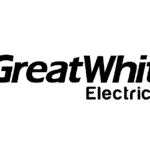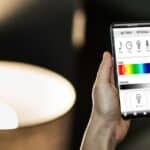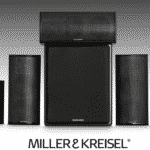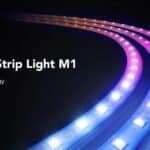
Ajax expands its video surveillance product category to meet a wider range of security scenarios. The company introduces three cameras featuring hybrid light illumination: BulletCam HL, TurretCam HL, and DomeCam Mini HL. These cameras combine IR and white light illumination to deliver colour footage even in low-light conditions. The new capabilities bring better image quality, more precise object recognition, and visual intruder deterrence at residential and commercial sites.
Hybrid illumination Cameras: see everything in color
Ajax introduces hybrid illumination cameras to address a common security challenge — capturing critical details in full color at nighttime. When motion or an object is detected, the devices switch from infrared (IR) to white light and deliver color footage instead of black-and-white. This helps identify vehicle details, clothing colors, and other visual cues that may be less distinct in the IR mode. The white light can also deter intruders, making it clear that they are exposed and being recorded.
The cameras that combine IR and white light illumination are available in three form factors. BulletCam HL and TurretCam HL offer up to 50 m of illumination range, while DomeCam Mini HL, due to its design specifics, covers up to 15 m.
Users can also choose from three operating modes. The white light can always be on in low-light conditions, completely disabled, or activated only when motion is detected. In the latter case, the light remains on for 30 seconds after motion is detected and does not switch off if movement continues.
Full-color image with white light illumination
The new camera lineup offers multiple matrix types and lens combinations. There are 5 MP CMOS sensors with 3K resolution (2880 × 1620 px) or 8 MP sensors with 4K resolution (3840 × 2160 px). Each sensor type is available with either a 2.8 mm or 4 mm fixed lens, resulting in twelve camera options. All cameras are available in two colors — black and white — to match the installation environment.
| 5 Mp/2.8 mm | 8 Mp/2.8 mm | 5 Mp/4 mm | 8 Mp/4 mm |
| 5 MP 2.8 mm (fixed) up to 2880 × 1620px 25 fps (3K UHD) 100°–110° | 8 MP 2.8 mm (fixed) up to 3840 × 2160px 20 fps (4K UHD) 100°–110° | 5 MP 4 mm (fixed) up to 2880 × 1620px 25 fps (3K UHD) 75°–85° | 8 MP 4 mm (fixed) up to 3840 × 2160px 20 fps (4K UHD) 75°–85° |
The lens defines the field of view and detail level. The 2.8 mm lens provides a wide 100°–110° viewing angle, ideal for covering open spaces. The 4 mm lens narrows the view to 75°–85° to enhance detail in targeted areas.
AI-based object and motion detection
Ajax cameras combine motion detection with AI-based object recognition, distinguishing between people, vehicles, and pets. Detection zones are configurable in Ajax apps down to a pixel, which helps reduce false positives and save storage space. The device can record continuously, by scenario, or only when motion or an object is detected, for example, if a person enters a restricted area. These settings help capture critical events while cutting down on the unnecessary footage and making recording review easier.
Motion detection with built-in AI
All AI processing takes place directly in the camera. It means fast response, complete data privacy, and no extra equipment or subscriptions. Over-the-air firmware updates allow for ongoing AI enhancements such as improved detection and analytics.
Privacy by design
Privacy is a core principle of Ajax video surveillance. Once the system is installed, only the end user has full control. Access to live video, archived recordings, and settings is permission-based and managed via the Ajax apps by the system owner. There are no backdoors — PRO accounts can access devices only temporarily and strictly within the time frame and permissions granted by the system owner.
Permission management via Ajax apps
Audio recording is disabled by default and can be selectively enabled. Privacy settings allow users to restrict sound access for live or archived footage while keeping video available.
Ajax also eliminates common video device vulnerabilities thanks to passwordless authentication. The cameras connect to the system using the mTLS protocol, which verifies encrypted certificates instead of using passwords. This prevents unauthorized device connection and secures communication with the cloud. Accounts are protected by passcodes or biometrics, two-factor authentication, and session control. These tools ensure that only authorized users can access the system and that every action is traceable.
Ajax Video Devices use Passwordless authentication via the mTLS protocol
Users can also configure privacy zones to hide specific parts of the frame from both live feed and archived recordings. For example, a safe within the camera’s field of view can be excluded, while surrounding activity remains visible. This feature ensures that sensitive information remains strictly private.
Protection of Sensitive Areas with Privacy Zones
Data transmission is protected by JetSparrow. This proprietary technology uses peer-to-peer architecture, TLS encryption, and advanced routing to ensure high connection stability and data integrity, even over unstable networks. Video streams reach the user with no delay or data loss.
All system data is securely stored within the European Union and fully complies with European data protection standards. Ajax video devices are also NDAA-compliant, which means that every component is sourced from manufacturers trusted and approved by the U.S. government.
Easy and flexible integration
Ajax cameras can be easily integrated into third-party video surveillance systems, including with or without Ajax NVR. The devices support ONVIF (Profiles S, T, and M1) and RTSP protocols, enabling direct connection to third-party systems as well as video and audio streaming. These capabilities make the cameras ideal for retrofitting existing installations or integrating into large-scale systems without compromising performance or functionality.
For More Information: www.ajax.systems















